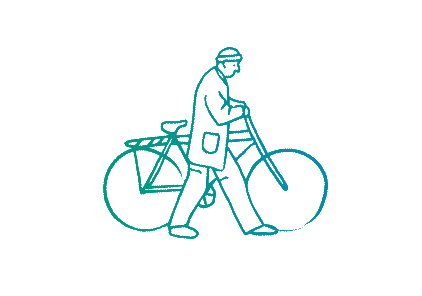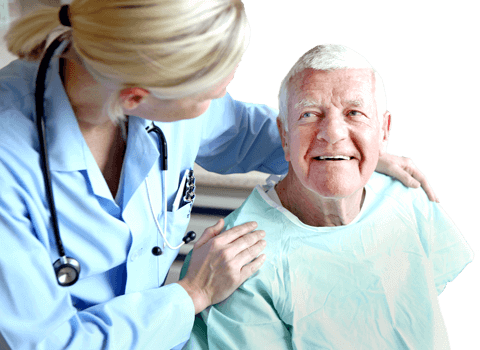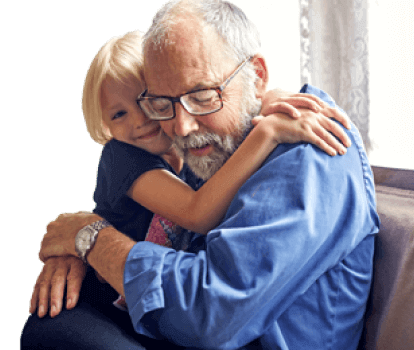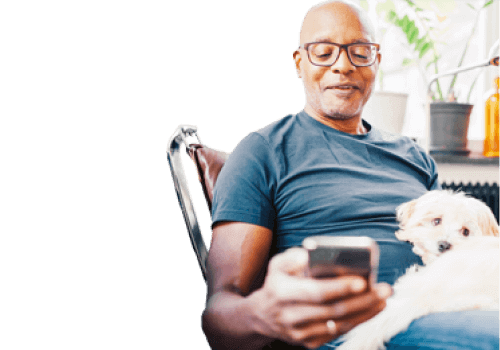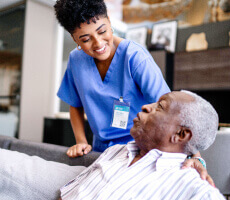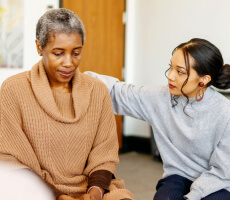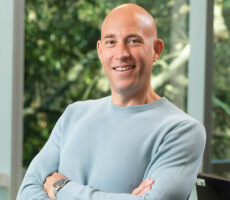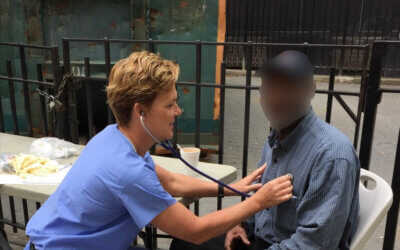Complementary Therapy: Comfort Available in Unexpected Ways
For hospice patients, sometimes traditional therapy doesn't quite help with symptom management. Discover how comfort can come in unexpected ways in the form of complementary therapy.
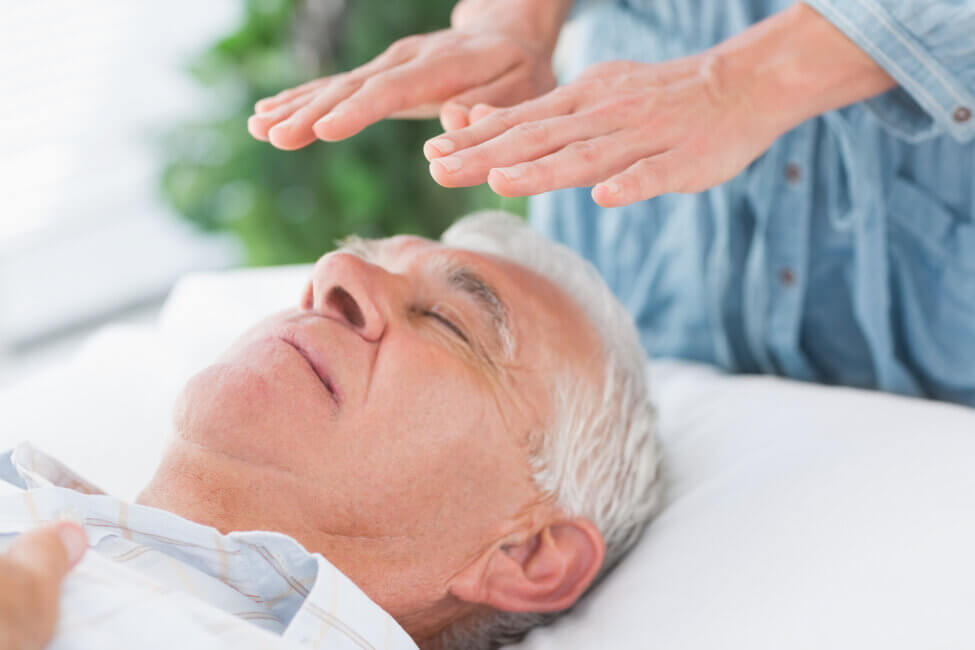
Trouble getting a solid 40 winks? Battling nausea when the sight of your favorite foods comes into view? Overwhelming anxious feelings at the drop of a dime? Experiencing unrelenting pain 24 hours a day/7 days a week? Most hospice patients, at one time or another, will face these battles during the course of their illness. Sometimes symptom management isn’t easy, and traditional methods just don’t quite make the grade. But comfort is available in unexpected ways ─ complementary therapy.
What is Complementary Therapy?
Complementary therapy is defined as any non-pharmaceutical, symptom management tool that relieves common discomforts and improves quality of life. And it’s not just for hospice patients, as caregivers can also reap the benefits. Often times, complementary therapy is used in conjunction with medical care. It is important to note it does NOT replace conventional methods.
Practitioners who offer complementary therapy follow the belief that it is important to treat the whole person and not just a symptom. These options are used as a “complement” to traditional medical practice. Many people assume that the term “alternative therapy” can be used interchangeably with complementary medicine, but alternative therapy is used instead of conventional medical care. Complementary therapy helps patients feel and cope better with their disease while receiving traditional medical care.
What are Some Types of Complementary Therapy?
There are a number of therapies considered to be complementary. They can be divided into categories, and we will begin with the therapies that should be provided by a certified practitioner.
Practitioner Required
Acupuncture: With this complementary therapy, tiny sterile needles are inserted into the skin at precise points by a licensed practitioner. According to a study in the Journal of the American Medical Association, acupuncture improved outcomes in patients with chronic pain. Additionally, a number of researchers looked into the benefits of acupuncture to ease the symptoms that many breast cancer patients face. One group at Memorial Sloane Kettering Cancer Center used electro-acupuncture to reduce hot flashes in breast cancer patients, which resulted in improved sleep. The results of this study were recently published in the journal Menopause.
How does acupuncture relieve pain and lessen other symptoms? It is believed that needle insertion stimulates the natural release of painkillers by the nervous symptom, which then head to the troublesome area(s) of the body.
Other acupuncture studies show that this complementary therapy may:
- Help relieve fatigue
- Decrease nausea
- Reduce vomiting
How does one find a certified acupuncturist? Today, many physicians take approved acupuncture training provided by the American Board of Medical Acupuncture. Click here to search the list. There are also certified acupuncturists who are not medical doctors. These individuals undertake thousands of hours of master’s degree program training that is accredited by the Accreditation Commission for Acupuncture and Oriental Medicine. Practitioners must pass a board exam in order to become a certified acupuncturist. Click here to search the list.
Hypnosis: When many hear the term hypnosis, they often visualize TV shows or movies depicting people losing their freedom to choose. In reality, when people are hypnotized, they achieve a deep state of concentration, aware of their surroundings but yet open to the power of suggestion put forth by the certified therapist.
During the last decade, more and more studies took on the task of determining how hypnosis can significantly reduce pain, especially for those suffering chronically. In 2013, Dr. Mark Jensen, editor-in-chief of the Journal of Pain, shared his findings during a presentation at the American Society of Clinical Hypnosis Annual Scientific Meeting. This complementary therapy was shown through imaging studies to decrease pain intensity by targeting brain areas where the experience of pain occurs. Additionally, hypnosis can impact the areas of the brain that process the emotional side of pain. If interested in finding a certified hypnotherapist, click here.
Massage: It is easy to understand how massaging the skin, muscles and tendons can produce a therapeutic response. In fact, the National Hospice and Palliative Care Organization whole-heartedly supports massage as a complementary therapy for hospice patients. According to Ann Catlin, OTR, LMT, founder of the Center for Compassionate Touch, massage therapy offers a great deal to hospice patients. At an American Massage Therapy Association national convention, Catlin shared the following, “Hospice is about providing comfort and dignity at the end of life. You are there to help people live until they die. Quality of life is the goal.” Massage therapy helps realize that goal.
Reputable therapists should be certified by the National Certification Board of Therapeutic Massage and Bodywork. To find a certified massage therapist, click here.
Music Therapy: The benefits of music can come in a variety of forms, from listening to a sonata or playing an instrument to singing songs or writing lyrics. A pioneer on the subject of death and dying, Elisabeth Kübler-Ross firmly believed in the power of music to help patients at the end of life. She especially recognized the value of music therapy for patients who might have withdrawn from family and friends.
While numerous studies over the years demonstrated how music therapy can help hospice patients with anxiety, pain and other symptoms, Lisa M. Gallagher and associates at the Cleveland Clinic recently researched how this complementary therapy positively impacted caregivers. Published in the June 2017 issue of Supportive Care in Cancer, their findings concluded that family members had an immediate positive effect from music therapy.
Reiki: Japanese in origin, this complementary therapy is performed by skilled practitioners who place hands on or above a person providing a gentle touch for energy flow. With Reiki, it is believed that humans have a life-force energy not seen by the naked eye. If you are battling a chronic disease or facing end-of-life issues, the life-force energy would be low under this theory. Therefore, if a practitioner provides Reiki therapy, the natural conclusion would be that your quality of life will improve.
Although created in 1865 in Japan by Dr. Mikao Usui, the first practicing Reiki clinic did not open until 1922. More than a decade passed before the practice of Reiki was introduced into Western cultures by a former patient of Dr. Usui’s — a Japanese-American woman named Hawayo Takata.
Starting in 2012, a hospice associated with the University of Pennsylvania, Penn Wissahickon Hospice explored Reiki as a complementary option for hospice patients. Studies have also been conducted by the National Center for Complementary and Integrative Health, part of the National Institutes of Health, with regard to the benefit that Reiki provides patients with diagnoses such as prostate cancer and advanced AIDS.
Today, Reiki is gaining more popularity as a complementary therapy option for hospice patients. To find a registered Reiki practitioner, click here.
Stay tuned for Part II in Thursday’s blog when we explore complementary therapy options that do not necessarily need a certified or licensed practitioner in order to reap the benefits.
Chapters Health System is committed to serving the needs of its patients, families, caregivers, health providers, partners and communities.
For more information, please call our helpful Chapters Health and HospiceHelp24® team at 1.866.204.8611 or Contact Us.
Keep Exploring
